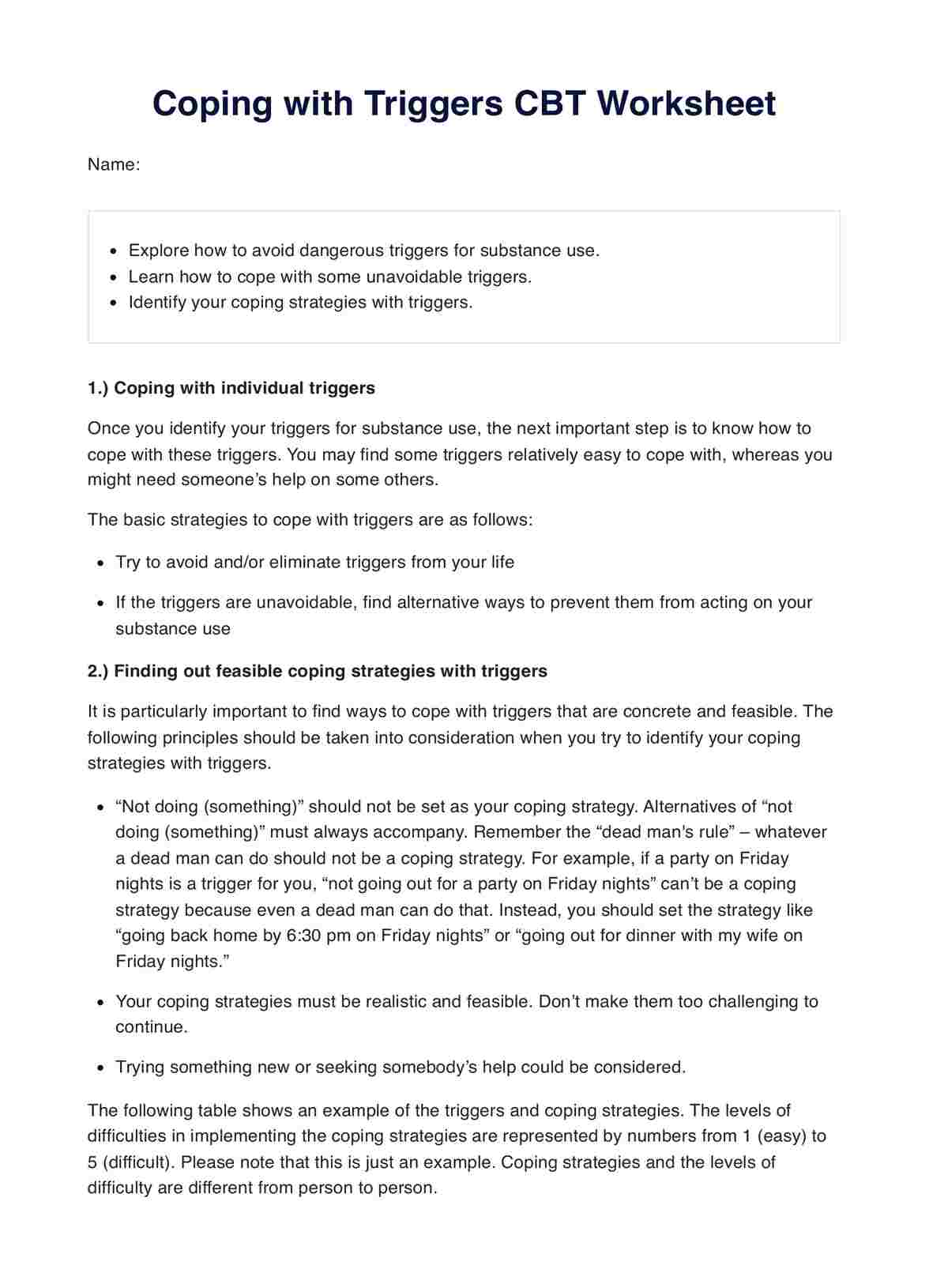Typically, it can take anywhere from 20 minutes to an hour, depending on the depth of reflection and the number of triggers identified.

Coping with Triggers CBT Worksheets
Dive deep into the Coping with Triggers CBT Worksheet, a vital tool for healthcare professionals. Enhance therapeutic outcomes with this free PDF download!
Use Template
Coping with Triggers CBT Worksheets Template
Commonly asked questions
It's readily available as a free PDF download from reliable sources or platforms like Carepatron.
?
While primarily designed for individuals in therapy, it can be utilized by therapists, counselors, and other healthcare professionals as a part of their toolkit.
EHR and practice management software
Get started for free
*No credit card required
Free
$0/usd
Unlimited clients
Telehealth
1GB of storage
Client portal text
Automated billing and online payments











